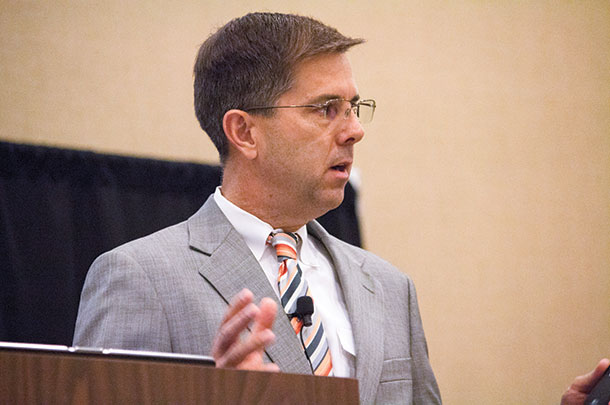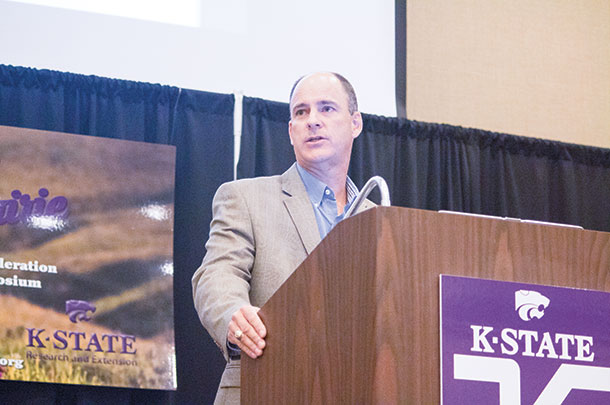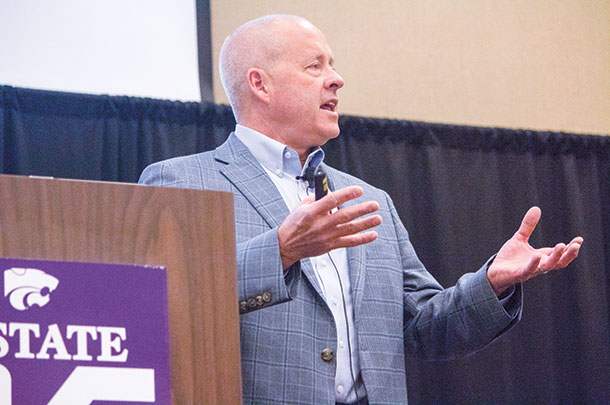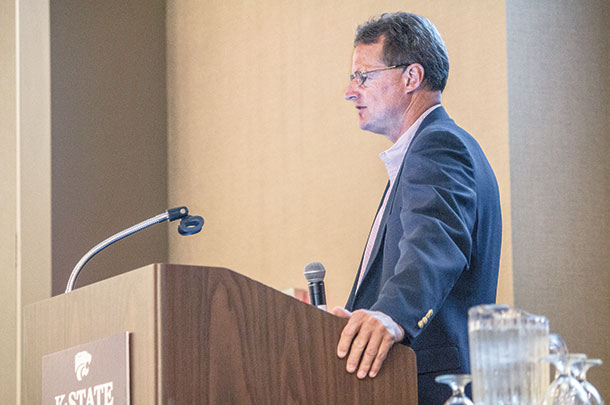Here’s what they said:

On improvements in the commercial cow herd:
“Just like we saw 20 years ago, some people in the industry are really good at being profitable – and some people are not so much. I believe controlling cost in a cow-calf segment is more important than creating more production or more revenue, meaning more weaning weight, weaning rate, higher calf prices and so on.”
—Dave Lalman, beef production
Oklahoma State University

On making the cow herd more efficient and profitable:
“The question is: What’s more important, genetics or management? We all know the heritability of these traits, and we all know the importance of management, so my response to that question is simply this: Good genetics must be accompanied by great management. We’ve had genetic advancements, but it’s not necessarily turning into pounds weaned at the cow-calf level the way that we would like it to.”
—Clay Mathis, director
King Ranch Institute

On opportunities for improving cow maintenance requirements:
“The finished weight for steers in 2030 – if we keep on the current trajectory – is going to be over 1,560 pounds, and if we take our current trend of mature weight, we are going to have some big cows in 20 years. We are not going to make much progress in reducing our input costs relative to maintenance requirements, so we need to think about that.”
—Mark Enns, beef geneticist
Colorado State University

On trait selection to improve eating quality:
“My question to all of you as geneticists is: Are we selecting for the right things? I think marbling is important, and certainly important in marketing of beef, but marbling in and of itself is not everything associated with eating satisfaction. Going forward, I think we need to start thinking about selecting for the actual economically important traits that we’re interested in improving, and those are tenderness, juiciness and flavor.”
—Keith Belk, professor of meat safety and quality
Colorado State University

On domestic and international growth:
“We need to have a continued investment and understanding in what’s happening in our domestic market – what those drivers are and how it’s influencing those decisions.
We need to make sure we are addressing any kind of new initiative we launch in this industry – whether it’s a new technology, a new genetic application or any other kind of investment – that we’re keeping in mind the domestic consumer market has to be receptive to what we’re doing and has to enjoy the benefit from what we’re doing if we expect to be prosperous.”
—Ted Schroeder, economist
Kansas State University
PHOTO 1: Dave Lalman, beef production, Oklahoma State University
PHOTO 2: Clay Mathis, director, King Ranch Institute
PHOTO 3: Mark Enns, beef geneticist, Colorado State University
PHOTO 4: Keith Belk, professor of meat safety and quality, Colorado State University
PHOTO 5: Ted Schroeder, economist, Kansas State University. Photos by Cassidy Woolsey.

-
Cassidy Woolsey
- Editor
- Progressive Forage
- Email Cassidy Woolsey








